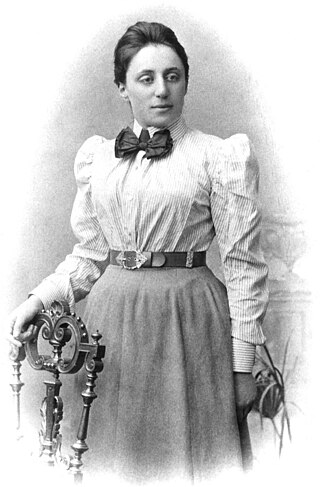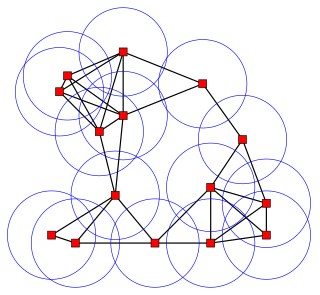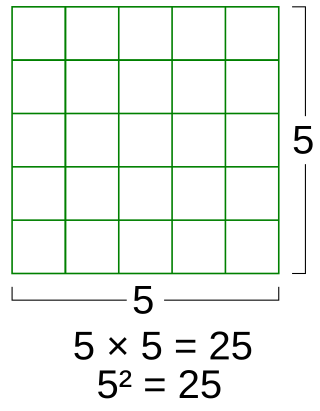
Algebraic geometry is a branch of mathematics, classically studying zeros of multivariate polynomials. Modern algebraic geometry is based on the use of abstract algebraic techniques, mainly from commutative algebra, for solving geometrical problems about these sets of zeros.
In mathematics, more specifically in ring theory, a Euclidean domain is an integral domain that can be endowed with a Euclidean function which allows a suitable generalization of the Euclidean division of integers. This generalized Euclidean algorithm can be put to many of the same uses as Euclid's original algorithm in the ring of integers: in any Euclidean domain, one can apply the Euclidean algorithm to compute the greatest common divisor of any two elements. In particular, the greatest common divisor of any two elements exists and can be written as a linear combination of them. Also every ideal in a Euclidean domain is principal, which implies a suitable generalization of the fundamental theorem of arithmetic: every Euclidean domain is a unique factorization domain.
In mathematics, a finite field or Galois field is a field that contains a finite number of elements. As with any field, a finite field is a set on which the operations of multiplication, addition, subtraction and division are defined and satisfy certain basic rules. The most common examples of finite fields are given by the integers mod p when p is a prime number.

Amalie Emmy Noether was a German mathematician who made many important contributions to abstract algebra. She discovered Noether's First and Second Theorem, which are fundamental in mathematical physics. She was described by Pavel Alexandrov, Albert Einstein, Jean Dieudonné, Hermann Weyl and Norbert Wiener as the most important woman in the history of mathematics. As one of the leading mathematicians of her time, she developed some theories of rings, fields, and algebras. In physics, Noether's theorem explains the connection between symmetry and conservation laws.

Algebraic number theory is a branch of number theory that uses the techniques of abstract algebra to study the integers, rational numbers, and their generalizations. Number-theoretic questions are expressed in terms of properties of algebraic objects such as algebraic number fields and their rings of integers, finite fields, and function fields. These properties, such as whether a ring admits unique factorization, the behavior of ideals, and the Galois groups of fields, can resolve questions of primary importance in number theory, like the existence of solutions to Diophantine equations.

In algebra, ring theory is the study of rings—algebraic structures in which addition and multiplication are defined and have similar properties to those operations defined for the integers. Ring theory studies the structure of rings, their representations, or, in different language, modules, special classes of rings, as well as an array of properties that proved to be of interest both within the theory itself and for its applications, such as homological properties and polynomial identities.
In mathematics, a quadratic form is a polynomial with terms all of degree two. For example,

Discrete geometry and combinatorial geometry are branches of geometry that study combinatorial properties and constructive methods of discrete geometric objects. Most questions in discrete geometry involve finite or discrete sets of basic geometric objects, such as points, lines, planes, circles, spheres, polygons, and so forth. The subject focuses on the combinatorial properties of these objects, such as how they intersect one another, or how they may be arranged to cover a larger object.

In mathematics, a square is the result of multiplying a number by itself. The verb "to square" is used to denote this operation. Squaring is the same as raising to the power 2, and is denoted by a superscript 2; for instance, the square of 3 may be written as 32, which is the number 9. In some cases when superscripts are not available, as for instance in programming languages or plain text files, the notations x^2 (caret) or x**2 may be used in place of x2. The adjective which corresponds to squaring is quadratic.
László Fejes Tóth was a Hungarian mathematician who specialized in geometry. He proved that a lattice pattern is the most efficient way to pack centrally symmetric convex sets on the Euclidean plane. He also investigated the sphere packing problem. He was the first to show, in 1953, that proof of the Kepler conjecture can be reduced to a finite case analysis and, later, that the problem might be solved using a computer.

In group theory, Hajós's theorem states that if a finite abelian group is expressed as the Cartesian product of simplexes, that is, sets of the form where is the identity element, then at least one of the factors is a subgroup. The theorem was proved by the Hungarian mathematician György Hajós in 1941 using group rings. Rédei later proved the statement when the factors are only required to contain the identity element and be of prime cardinality. Rédei's proof of Hajós's theorem was simplified by Tibor Szele.

Algebraic combinatorics is an area of mathematics that employs methods of abstract algebra, notably group theory and representation theory, in various combinatorial contexts and, conversely, applies combinatorial techniques to problems in algebra.
Arithmetic dynamics is a field that amalgamates two areas of mathematics, dynamical systems and number theory. Classically, discrete dynamics refers to the study of the iteration of self-maps of the complex plane or real line. Arithmetic dynamics is the study of the number-theoretic properties of integer, rational, p-adic, and/or algebraic points under repeated application of a polynomial or rational function. A fundamental goal is to describe arithmetic properties in terms of underlying geometric structures.

In mathematics, more specifically algebra, abstract algebra or modern algebra is the study of algebraic structures. Algebraic structures include groups, rings, fields, modules, vector spaces, lattices, and algebras over a field. The term abstract algebra was coined in the early 20th century to distinguish this area of study from older parts of algebra, and more specifically from elementary algebra, the use of variables to represent numbers in computation and reasoning.
Tamás Szőnyi is a Hungarian mathematician, doing research in discrete mathematics, particularly finite geometry and algebraic coding theory. He is full professor at the Department of Computer Science of the Eötvös Loránd University, Budapest, vice director of the Institute of Mathematics, and vice chairman of the Mathematical Committee of the Hungarian Academy of Sciences. In 2001, he received the Doctor of Science title from the Hungarian Academy of Sciences. Szőnyi created a successful school in finite geometry. He has done influential work on blocking sets and the polynomial method.
In algebra, a Pythagorean field is a field in which every sum of two squares is a square: equivalently it has Pythagoras number equal to 1. A Pythagorean extension of a field is an extension obtained by adjoining an element for some in . So a Pythagorean field is one closed under taking Pythagorean extensions. For any field there is a minimal Pythagorean field containing it, unique up to isomorphism, called its Pythagorean closure. The Hilbert field is the minimal ordered Pythagorean field.
Mathematics is a broad subject that is commonly divided in many areas that may be defined by their objects of study, by the used methods, or by both. For example, analytic number theory is a subarea of number theory devoted to the use of methods of analysis for the study of natural numbers.

In geometry, a motion is an isometry of a metric space. For instance, a plane equipped with the Euclidean distance metric is a metric space in which a mapping associating congruent figures is a motion. More generally, the term motion is a synonym for surjective isometry in metric geometry, including elliptic geometry and hyperbolic geometry. In the latter case, hyperbolic motions provide an approach to the subject for beginners.

Andor Kertész was a Hungarian mathematician and professor of Mathematics at the Lajos Kossuth University (KLTE), Debrecen. He is the father of linguist András Kertész.










